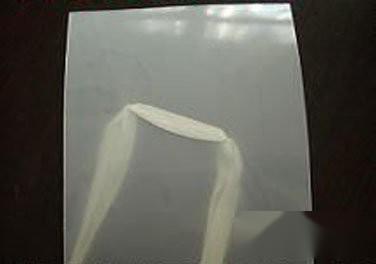Shandong Tianhai ECB Waterproof Board is a sheet material used for waterproofing projects in tunnels and dams both domestically and internationally. Its molecular weight reaches 250,000. Its performance can be adjusted according to the proportion of ethylene content to meet various application requirements. It has excellent flexibility, cold resistance, elasticity, stress crack resistance, and is lightweight, making it particularly suitable for waterproofing materials on the inner surfaces of arches. It is an ethylene-vinyl acetate copolymer produced through a two-stage extrusion and three-roll calendering process. The material is translucent and is classified as an environmentally friendly material.
Product Features:
※ Chemical corrosion resistance and UV radiation resistance;
※ Aging resistance and good wear resistance;
※ Strong puncture resistance;
※ Easy to install and pollution-free;
Application Range:
Waterproofing for newly constructed railways, highways, municipal roads, light rail transit construction (including bridge decks, tunnels), roofs, underground engineering, water conservancy construction, sewage treatment projects, landfill projects, chemical acid and alkali treatment pits, and other environmental protection projects for seepage prevention and corrosion-resistant lining use.
Product Series:
Separate waterproof board: Geotextile and hanging strap waterproof board are laid in layers;
Composite waterproof board: Geotextile and waterproof board are integrated, with point-type and strip-type composites. The product edges are reserved for splicing weld seams, and the geotextile is equipped with hanging straps for overall onsite laying, completed in one go.
Product Specifications:
Polyester needle-punched geotextile: 300-400g/m2
PE/EVA/ECB/ECD synthetic resin roll thickness: 0.8, 1.0, 1.2, 1.5, 2.0mm
Width: 2m-6m;
Construction Key Points:
Base treatment: Before the construction of the ECB waterproof board, measure and inspect the tunnel clearance, and treat areas with under-excavation, uneven surfaces, and exposed anchor rod heads to meet clearance and base requirements.
Hanging iron wire: First, mark the centerline of the tunnel arch with red paint, then lay hanging iron wire along the tunnel longitudinally on the arch centerline, and from the arch to both side walls, spacing 0.9m (less than the hanging rope spacing of 10cm), parallel to the tunnel centerline, with the length of the iron wire ends greater than the ECB waterproof board laying length by 1m. When laying the iron wire, first drill holes in the initial support surface with a rotary drill, then wedge in wood wedges. The outer end of the wedged wood should be flush with the hole. Nail into the area to be wedged, hang the iron wire on the nails, and then bend the nails to prevent them from puncturing the ECB waterproof board during concrete construction, which would affect the waterproofing effect. Nails should be placed every 2m, and if the tunnel profile is uneven, increase the density appropriately to ensure the iron wire closely adheres to the initial support.
Hanging ECB waterproof board: Align the centerline of the ECB waterproof board with the center of the tunnel arch, tie the centerline hanging rope to the tunnel arch center iron wire, and hang the transverse hanging rope from the arch to both side walls. After all are hung, move the platform forward. Use the same method to hang the second and third rings until the entire lining cycle section is completed. The ECB waterproof board should be laid ahead; that is, the length of the ECB waterproof board laid for each lining cycle should be at least 1m longer than the lining length, to ensure the large ECB waterproof board joints are securely bonded.
ECB waterproof board joint bonding: The ECB waterproof board uses overlapping bonding with an overlap length of 10cm. When bonding, first clean and dry the surface joint of the ECB waterproof board, then evenly brush the adhesive on with a brush. The adhesive should not be too thick when applying. Use a hand iron to lay the ECB waterproof board flat on a board, and roll the joint with a roller until the bonding is smooth and firm. After completing the bonding of each section, support the joint with a wooden board and remove the support after 30 minutes.
Protection of the ECB waterproof board: When welding rebar, cover it with asbestos cement board to prevent sparks from damaging the waterproof layer. Timely concrete pouring for protection; during secondary lining, set a protective layer at the waterproof board facing the concrete delivery pipe to avoid damaging the ECB waterproof board.













